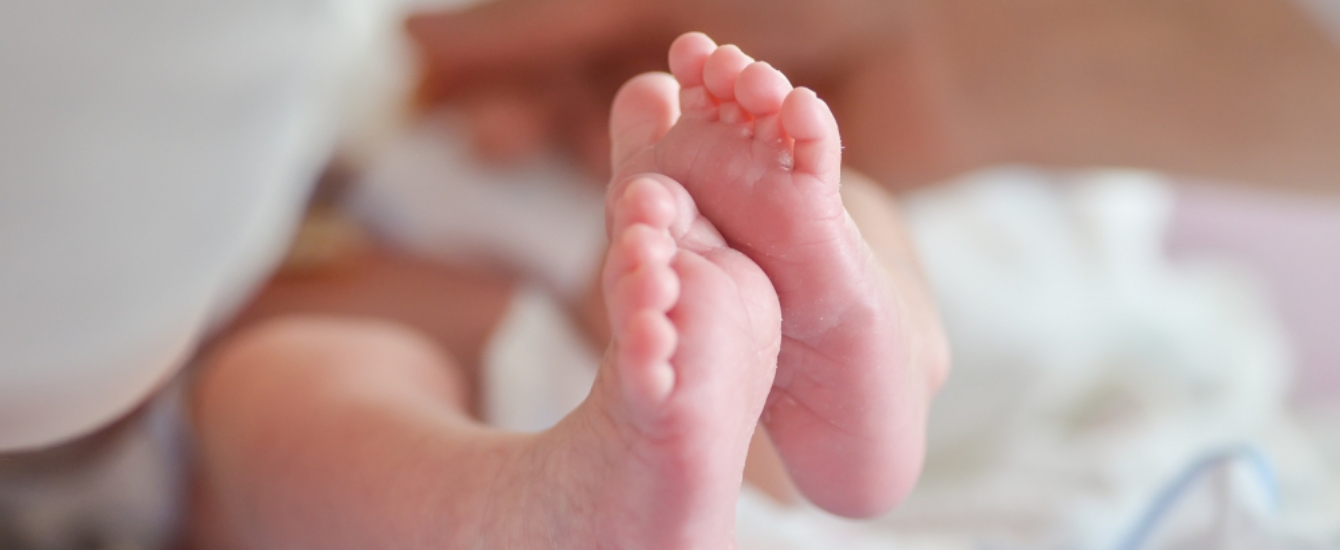Low Birth Weight: Causes, Risks & Newborn Care
One of the first measurements taken after birth is the baby's weight. The measurement will be within the normal range for the majority of newborns. Low birth weight, on the other hand, is defined as weighing less than 2.5 kilograms (5 pounds, 8 ounces).
Although low birth weight does not always signify a medical issue, it may suggest a higher chance of complications. Early detection enables medical staff to keep a close eye on the infant and offer any support that may be required right away.
Parents can feel more prepared and knowledgeable if they are aware of the underlying causes, possible risks, and care techniques for low birth weight.
What Is Low Birth Weight?
When a baby is born weighing less than average for their gestational age, it is referred to as having low birth weight. Although it may not always indicate the general health of the unborn child, it may indicate underlying growth problems or pregnancy complications. Sometimes, medical professionals use categories:
- Low birth weight – under 2.5kg
- Very low birth weight – under 1.5kg
- Extremely low birth weight – under 1kg
Even if a baby is born at full term, they may have a low birth weight because they were born early (premature birth) or because their growth was slower in the womb.
Common Causes of Low Birth Weight
A baby may be born weighing less than average for a number of reasons:
- Early birth: Less time in the womb means less time for weight gain.
- IUGR: A condition known as intrauterine growth restriction (IUGR) occurs when the baby grows more slowly than anticipated during pregnancy.
- Multiple births: Twins, triplets, or more frequently share nutrients and have limited space.
- Conditions affecting the mother: Diabetes, high blood pressure, heart disease, or kidney issues.
- Lifestyle factors: Things like smoking, drinking, using drugs, or not eating well while pregnant
- Genetic factors: Children born to naturally smaller parents may be smaller themselves.
And sometimes there is no discernible cause.
What are the symptoms of low birth weight?
Although the baby's actual weight is the most accurate indicator, during pregnancy, doctors can identify risks for low birth weight through ultrasound scans, measurements of the mother’s abdomen, and monitoring foetal growth patterns.
The following physical symptoms could also be linked to low birth weight:
- Smaller than the typical newborn
- Decreased body fat and muscle mass
- Skin that is thinner or more delicate
- Having trouble regulating body temperature
- Feeding difficulties or fatigue during feedings
While some low birth weight babies may exhibit multiple of these traits, others may not exhibit any outward signs beyond their size.
How Low Birthweight Is Diagnosed?
Every newborn is weighed soon after birth, making the diagnosis simple. The baby is considered to have low birth weight if the reading is less than 2.5 kg.
To find out if the baby was born too soon, if there are underlying medical issues, or if more care is needed, more tests might be performed.
Risk Factors for Low Birthweight Babies
The following conditions increase the likelihood of a low birth weight baby:
- Previous low birth weight child
- Multiple pregnancies
- Mother's age either under 17 or over 35
- Inadequate or nonexistent prenatal care
- Mothers' chronic illnesses
- Mothers' inadequate nutrition
- Smoking, drinking, or using drugs during pregnancy
- Infections associated with pregnancy
A low birth weight is not guaranteed by having one or more risk factors during pregnancy, but it does necessitate closer monitoring. The likelihood of complications can be considerably decreased by identifying and controlling these risk factors through routine prenatal care.
Complications of Low Birth Weight
Particularly in the first few weeks of life, low birth weight may be linked to an increased risk of health issues:
- Breathing issues
- Inability to control body temperature
- Hypoglycemia, or low blood sugar
- Increased vulnerability to infections
- Issues with feeding
- Possible delays in development
With timely and appropriate care, many of these problems can be effectively managed.
Specialized Treatment and Care for Low Birth Weight Newborns
A low birth weight baby's care is determined by their size and whether or not they were born early. While some can stay with their parents but need closer supervision, others might need to be admitted to a neonatal unit.
Specialized care could consist of:
- Using an incubator to keep things warm
- Tube or assisted feeding
- Special formula or fortified breast milk
- Vital signs continuously monitored
- Frequent weight checks to monitor development
Supporting the infant's growth until they achieve a stable and healthy weight is the goal.
How to Prevent Low Birth Weight?
Even though not every situation can be avoided, there are some steps that can help lower the risk:
- Keeping all prenatal appointments
- Maintaining a healthy, nutrient-dense diet during pregnancy
- Steering clear of alcohol, tobacco, and recreational drugs
- Taking medical advice when managing long-term health issues
- Providing enough sleep and, if feasible, lowering stress
Although some babies will still be naturally smaller even with the best care, taking these steps can increase the likelihood of a healthy birth weight.
Conclusion
Low birth weight is a medical classification, not a definitive prediction of a baby’s future health. Early detection, appropriate monitoring, and tailored care give low birth weight babies the best possible start in life.
By understanding the causes, recognising the risks, and supporting maternal health during pregnancy, parents and healthcare providers can work together to promote healthy outcomes for newborns. Proactive pregnancy care, combined with advances in neonatal medicine, means that many low birth weight babies can thrive and lead healthy lives.
References:
- Diabelková, J., Rimárová, K., Urdzík, P., Dorko, E., Houžvičková, A., Andraščíková, Š., ... & Škrečková, G. (2022). Risk factors associated with low birth weight. Cent Eur J Public Health, 30(88), S43-9.
- Dutta, S., Singh, B., Chessell, L., Wilson, J., Janes, M., McDonald, K., ... & Fusch, C. (2015). Guidelines for feeding very low birth weight infants. Nutrients, 7(1), 423-442.
- Halli, S. S., Biradar, R. A., & Prasad, J. B. (2022). Low birth weight, the differentiating risk factor for stunting among preschool children in India. International Journal of Environmental Research and Public Health, 19(7), 3751.
- Jańczewska, I., Wierzba, J., Jańczewska, A., Szczurek-Gierczak, M., & Domżalska-Popadiuk, I. (2023). Prematurity and low birth weight and their impact on childhood growth patterns and the risk of long-term cardiovascular sequelae. Children, 10(10), 1599.
- Lestari, J. F., Etika, R., & Lestari, P. (2021). Maternal risk factors of low birth weight (LBW): Systematic review. Indonesian Midwifery and Health Sciences Journal, 4(1), 73-81.





